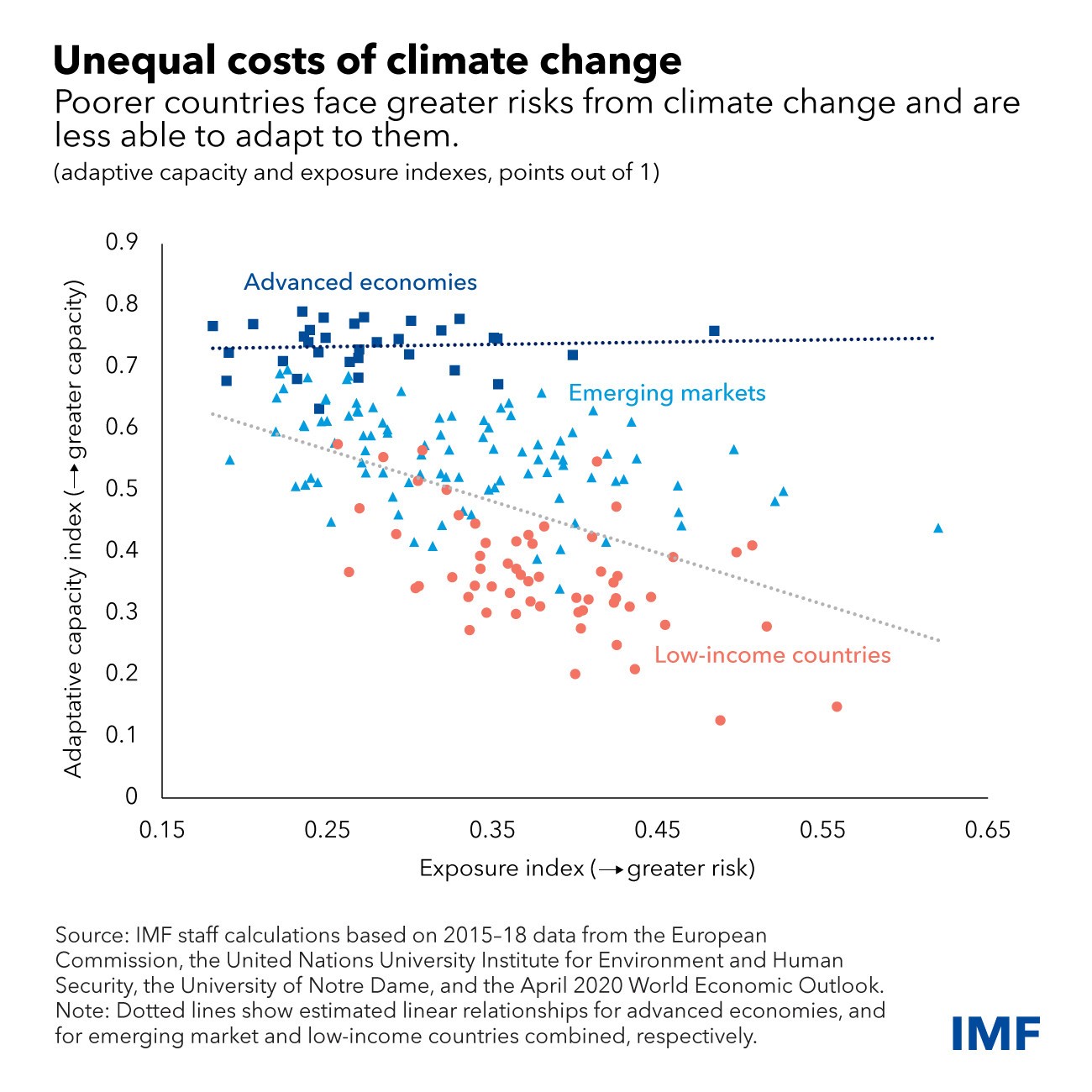This is how we can support the most vulnerable through climate change
来源:World Economic Forum;发表于:2022-05-05;人气指数:363
This is how we can support the most vulnerable
through climate change
https://www.weforum.org/agenda/2022/03/poor-vulnerable-countries-support-adapt-climate-change/

Sub-Saharan Africa experiences one-third of the world's droughts.
Image: REUTERS/Baz Ratner
30 Mar 2022
Kristalina Georgieva
Managing Director, International Monetary Fund
Victor Gaspar
Director, Fiscal Affairs Department, IMF
Ceyla Pazarbasioglu
Senior Director, Finance, Competitiveness and Innovation Global Practice,
World Bank
*The poorest countries face the greatest risks from climate change and
require international support to finance adaptation, says the International
Monetary Fund.
*The IMF is helping by extending its capacity development support.
*It’s in the world’s interest to ensure climate change does not jeopardize
development and stability in poorer countries, it says.
All countries, rich and poor, must adapt to climate change. A
recent report by the United Nations Intergovernmental Panel on
Climate Change spelled out the dramatic consequences of failing to curb the
rise in global temperature and adapting to a hotter planet. Adaptation should
address risks from climate change and extreme weather, for example by
safeguarding agriculture, managing the impact of rising seas, and making
infrastructure more resilient.
The benefits of adaptation are sometimes difficult to estimate because
they depend on specific factors such as how well-adapted a country is to its
current climate. Nevertheless, well-crafted policies can produce large returns,
as we show in three papers published in March 2022 covering climate
adaptation and fiscal policy, macro-fiscal implications, and bringing
climate adaptation into the mainstream of fiscal planning.
Long-term savings from investment in resilience and coping mechanisms—such
as better irrigation, improved seed varieties, strengthened health systems, and
greater access to finance and telecommunications—can be very significant. This
is especially true for sub-Saharan Africa, which experiences one-third of the
world’s droughts and is particularly vulnerable to rising temperatures and
extreme weather because of its dependence on rain-fed agriculture. Our
research shows that a single drought can lower an African country’s
medium-term economic growth potential by 1 percentage point.
In Ethiopia, however, some farmers’ yields rose by up to 40 percent
with the development of varieties of wheat that were resistant to rust, a
fungal disease. In Ghana, meanwhile, cocoa farmers made their crops more
resistant to drought with improved seed and irrigation and by planting trees to
shade their crops from the sun.
The benefits of investing in adaptation are not confined to sub-Saharan
Africa: countries in all regions of the world can benefit from adapting to a
hotter planet. Yet this doesn’t mean adaptation can replace
mitigation. Without strong mitigation, it will be impossible to stabilize
global temperature, and adaptation would become impossibly expensive.
Daunting costs
Some countries face daunting costs already. Research by the IMF and others
suggests public adaptation costs will reach around 0.25 percent of global gross
domestic product per year in coming decades. While such estimates can appear
manageable at the global level, they aren’t representative of the scale of the
challenge faced by many poor and vulnerable countries. We estimate that annual
needs exceed 1 percent of GDP in about 50 low-income and developing economies
for the next 10 years. The costs can be even larger for small, island
nations exposed to tropical cyclones and rising seas, up to 20 percent of
GDP.
Unfortunately, countries that need to adapt the most often lack the means
to do so. They typically lack the financing and the institutional capacity to
implement needed adaptation programs. Further, some countries most exposed to
heat waves, droughts, storms, and sea-level rise often confront other pressing
development needs. That means it’s more important than ever to invest in
resilient growth, with adaptation fully integrated with other sustainable
development goals.

Poorer countries are facing great risks of climate change.
Image: IMF
The international community can help poor and vulnerable countries adapt
by providing financial support and developing institutional capacity. These
countries will suffer the most devastating impacts of climate change even
though they’re not responsible for causing it. It’s also in the world’s
interest to ensure climate change does not jeopardize development and stability
in poorer countries. Investing in climate resilience can also be financially
efficient for development partners because up-front investment in protection
can be less expensive than humanitarian relief and reconstruction after a
disaster.
To be fruitful, adaptation support should supplement existing aid, with
streamlined conditionality that’s commensurate with the country’s institutional
capacity. For example, we found that lengthy and complex requirements have
hindered the direct access of Pacific Island countries to international
climate funds.
How the IMF is helping
The IMF is helping its members meet adaptation challenges, including with
the release of these three reports, which supplement and support work by the World
Bank, the Intergovernmental Panel on Climate Change, and other international
organizations, and build on existing work at the Fund.
Such work includes analysis of the regional and country challenges of
adapting to climate change in our annual Article IV consultations (for example,
for Maldives, for Republic of Congo, or Dominica) and in
cross-country studies (for sub-Saharan Africa, for the Western Hemisphere, and
for Asia and the Pacific).
The Fund is also helping by extending its capacity development support,
which now includes climate macroeconomic assessment programs, climate-focused
public investment management assessments and green public financial
management.
And finally, we are working with member nations and partners to develop
financing solutions, such as the proposed Resilience and Sustainability
Trust, to channel financial resources from countries with strong external
positions into affordable long-term financing for vulnerable countries. This
will help recipients address structural challenges such as climate change
through policy reforms to foster balance of payments stability.
Climate adaptation alone is not enough. Unless global temperature is
stabilized by strong mitigation, adaptation will become impossibly expensive.
Yet countries can still reap large benefits from investing in resilient growth
and integrating adaptation into development strategies.